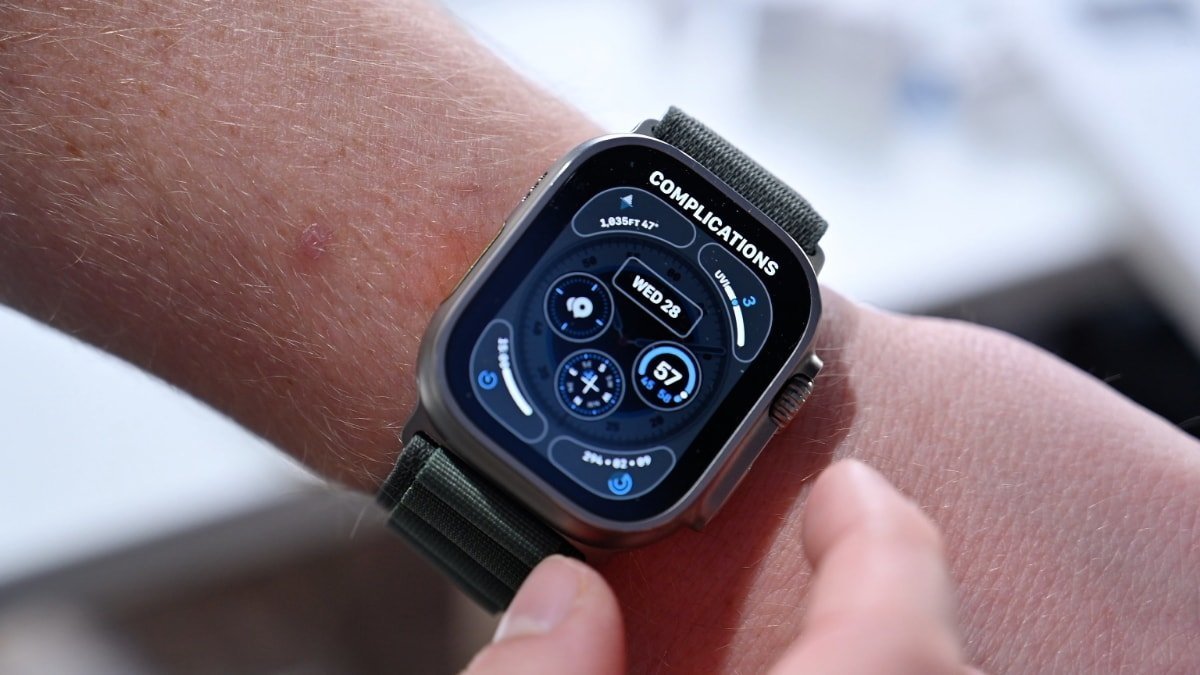Apple Watch Ultra is not the only micro LED project Apple has cancelled
Following AppleInsider's report on Thursday about the likely cancellation of the Apple Watch Ultra with micro LED, analyst Ming-Chi Kuo says that Apple has abandoned nearly all of its plans to use micro LED displays.

Apple Watch Ultra
Following news that the micro LED Apple Watch Ultra 3 may be dead, Ming-Chi Kuo is reporting why he believes it's happened. He also names ams Osram as the supplier, which was previously only suspected and not confirmed by either party.
"My latest investigation indicates that Apple has canceled the development plan for the Micro LED Apple Watch," wrote Kuo on Twitter/X. "The reason is that Apple believes that Micro LED cannot significantly increase the added value of the product, and the production cost is too high, making it uneconomical to invest."
Kuo further says that Apple has laid off many people from its micro LED development team. This team was working on more than the Apple Watch Ultra, and he adds that there is no sign of any further micro LED devices being worked on.
There appear to be some oddities in Kuo's reporting, starting with how he claims that ams Osram cancelled its contract with Apple. Assuming Kuo is correct about which supplier is involved, it appears that the reverse was true -- and brutal.
The CEO of ams Osram, while saying only that an unnamed client had cancelled, told press that "the shock is still deep."
Second, Kuo describes the cancellation as "undoubtedly a major setback for Apple." It's only a setback for ams Osram -- which reportedly has built a purpose-made $1.41 billion factory in Malaysia to service Apple.
Kuo argues that this is a setback because Apple wants to use improved displays to make the Apple Watch Ultra more competitive. But this directly follows his saying Apple doesn't think micro LED can add enough value to the Apple Watch Ultra to make it worth the investment.
Apple was bringing micro LED to more devices
The advantages of micro LED over other display technologies such as OLED, is that it's much thinner, consumes less power, and are brighter in outdoor conditions. They're also able to be used on curved or foldable surfaces.
Consequently, while it was believed that the Apple Watch Ultra would be the first Apple device to get micro LED, previous reports claimed that it would come later to the iPhone, iPad, and Mac.
The cancellation is a smaller-scale repeat of Apple's ending of its Apple Car project. While Apple hasn't spent ten years on the micro LED display for the Watch, it has invested time and seen multiple delays over it.
Rumor Score: Possible
Read on AppleInsider


Comments
(Gosh, I forgotten all about the product related Apple Sapphire)
In 2014 Apple acquired Luxvue Technology, a startup company that developed Micro-LED based displays. Since then, Apple sped up its MicroLED R&D project, and until recently was well into developing solutions for smartwatches, AR, and other types of displays for Apple products, basing from a dedicated microLED research and production facility in Taoyuan, Taiwan.
“Apple has spent at least $1 billion on the R&D and samples for micro-LED technologies in the past nearly 10 years. It wants to secure more control over the next-gen display technologies for its future products.”
It's been a long and winding road.
I think sometimes it takes so long to develop a technology that by the time they're getting close to something being ready the market has already moved on. Apple Car and Apple Watch micro-led display might be examples, both of which have been rumored for a decade.
Are we seeing a shift in the Apple that we know? One that happily buys off-the-shelf components rather than pushing for better?